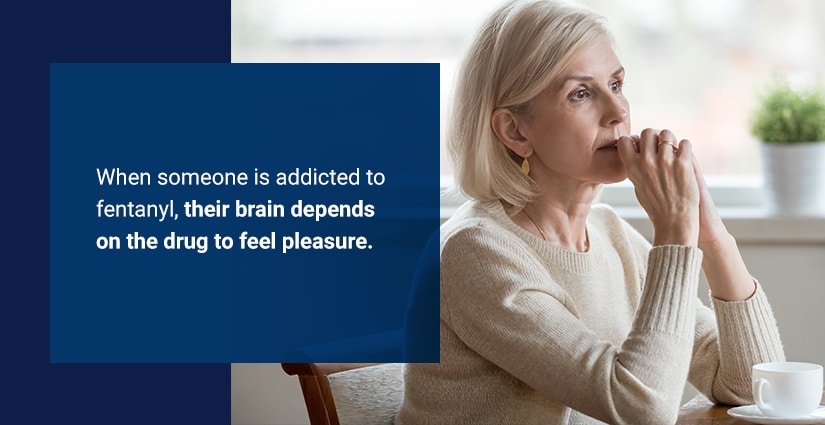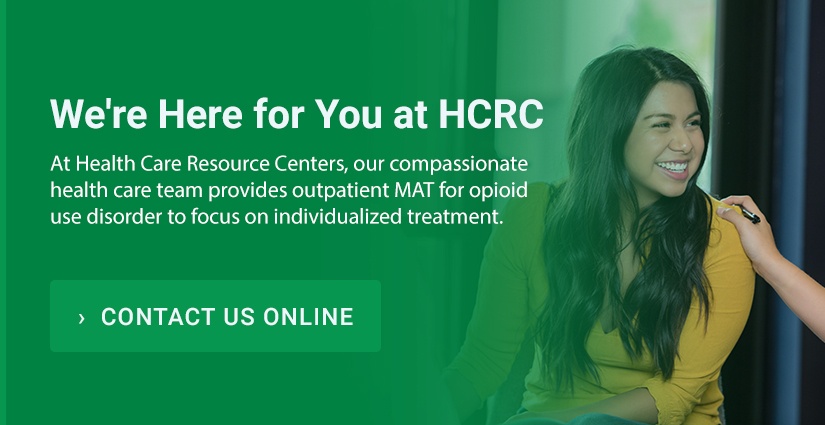Addiction to fentanyl or other opioids is a severe health condition. According to a National Safety Council report, people in the United States are more likely to die from an opioid overdose than from a car accident, fall or fire. Someone with a fentanyl use disorder is more likely to take too much of the drug at once. Even if an overdose does not occur, a person will experience social, mental and physical health consequences if they continue to misuse fentanyl.
Fortunately, addiction is a highly treatable disease, and no one has to take the road to recovery alone. The first step to healing is recognizing the signs of fentanyl addiction. From there, you or your loved one can get the help you need.
What Is Fentanyl?
Fentanyl is a fast-acting, synthetic opioid. Pharmaceutical companies make it as a prescription pain medication, but people also manufacture it illegally. Like other opioids, including heroin and morphine, fentanyl attaches to the parts of the brain that control emotion and pain. When taken, it produces feelings of euphoria, pain relief and relaxation. It can also cause confusion, dizziness, nausea, vomiting, slowed breathing and decreased blood pressure.
Fentanyl is many times more potent than many other opioids and is one of the most dangerous drugs. For example, it’s up to 100 times more powerful than morphine, and it takes a tiny amount to be deadly. According to the Drug Enforcement Administration, only two milligrams of fentanyl, or the size of about five grains of salt, is lethal for most people.
What Is Fentanyl For?
Doctors prescribe fentanyl to patients experiencing severe pain if other medications don’t help them. It’s usually for patients coping with cancer pain. Doctors prescribe fentanyl in lozenges, tablets, nasal sprays, injectable medication or skin patches. Often, prescription forms of fentanyl are available on the black market.
Drug dealers use fentanyl to make more money. They might sell fentanyl from illegal labs. Illicitly produced fentanyl can come in the form of counterfeit prescription drugs or powder. Since fentanyl is cheap to make and it takes only a tiny amount to create an intense effect, some drug dealers mix fentanyl with other illegal substances to save money. Many people use fentanyl unknowingly because dealers add it to drugs like cocaine, heroin and methamphetamine.
What Are the Signs of Fentanyl Misuse?
People might misuse fentanyl to experience an intense but short-lived high. Some people misuse fentanyl to escape chronic physical pain, stressful situations or emotional suffering. If someone misuses fentanyl regularly, they will develop a tolerance to the drug. When this happens, they’ll need to take increased amounts of fentanyl to experience the desired effects. Eventually, the person will become dependent on fentanyl, which may lead to an addiction.
Signs and Symptoms of Fentanyl Addiction
Like other opioids, fentanyl is highly addictive. When someone is addicted to fentanyl, their brain depends on the drug to feel pleasure, which mutes their enjoyment of other hobbies. It can be hard to control a fentanyl addiction, even if it causes problems at home, school or work.
Part of having an addiction is avoiding withdrawal. Someone with a fentanyl addiction will plan their life around obtaining the drug to prevent extremely uncomfortable withdrawal symptoms that come with quitting. Fentanyl withdrawal symptoms include:
- Intense cravings
- Irritability
- Trouble sleeping
- Sweating
- Runny nose
- Nausea
- Vomiting
- Diarrhea
- Stomach pain
- Chills
Fentanyl Abuse Signs
Having a fentanyl addiction is more than being physically dependent on the drug. Fentanyl addiction is a type of opioid use disorder. A defining characteristic of opioid use disorders is an overwhelming desire to use drugs, despite the consequences. This disorder is widespread in the United States, affecting over 2 million people. Doctors confirm an opioid use disorder diagnosis if they observe two or more of the following over 12 months:
- The patient takes opioids in greater amounts or for a longer period than intended.
- They can’t control or decrease opioid use.
- The patient spends a significant amount of time obtaining, using and recovering from the effects of opioids.
- They experience intense cravings to use opioids.
- Their opioid use is preventing them from fulfilling obligations at home, work or school.
- The person no longer participates in meaningful social, recreational or occupational activities due to opioid use.
- They use opioids in physically dangerous situations.
- They continue to use opioids despite the physical or psychological problems caused or worsened by the drug.
- The patient exhibits tolerance to opioids.
- The patient experiences withdrawal.
Opioid use disorder is a complex medical condition caused by many different factors. Depression, anxiety and past traumas can increase the risk of an opioid use disorder. A treatment program can address all these issues to target the addiction’s root cause.
The Dangers of Fentanyl Addiction
Fentanyl addiction can lead to severe health issues or a fatal overdose. This extremely potent drug and other synthetic opioids were responsible for over 36,000 overdose deaths in 2019. Fentanyl can cause someone’s breathing to slow or stop, resulting in a dangerous lack of oxygen to the brain.
Anyone might unknowingly overdose on fentanyl, thinking they are taking a different drug. However, the World Health Organization lists the following risk factors for an opioid overdose:
- Taking opioids by injection
- Having an opioid use disorder
- Using opioids in combination with other drugs or alcohol
If a fentanyl overdose occurs, it can be challenging to treat. Since drug dealers mix fentanyl with other drugs, doctors may not be able to tell which substance caused the overdose.
Fentanyl is also dangerous in other ways. Opioid addiction can lead to numerous long-term health effects, including gastrointestinal issues, weakened immune system function and liver or kidney disease.
Breaking Free From Opioid Addiction
No matter how challenging it seems to overcome opioid addiction, there is hope for recovery. Like many other chronic health conditions, opioid addiction is treatable with medication and behavioral counseling. In particular, medication-assisted treatment is an effective method for addiction recovery.
With MAT, medical professionals use medications like methadone and buprenorphine to treat fentanyl’s physical effects and reduce cravings and withdrawal symptoms. These medications allow a patient’s brain to heal as they work on recovering. The other part of MAT involves counseling. Through individual and group counseling, patients learn strategies to change negative thinking patterns and behaviors, address underlying causes of addiction and discover healthy ways to cope with life’s stressors.
We’re Here for You at HCRC
Fentanyl addiction recovery is possible with MAT and a robust support system. At Health Care Resource Centers, our compassionate health care team provides outpatient MAT for opioid use disorder to focus on individualized treatment. Our priority is helping each client heal from their substance abuse disorder and enjoy a higher quality of life. To learn more about our programs, contact us online or reach out to one of our New England treatment centers today.



